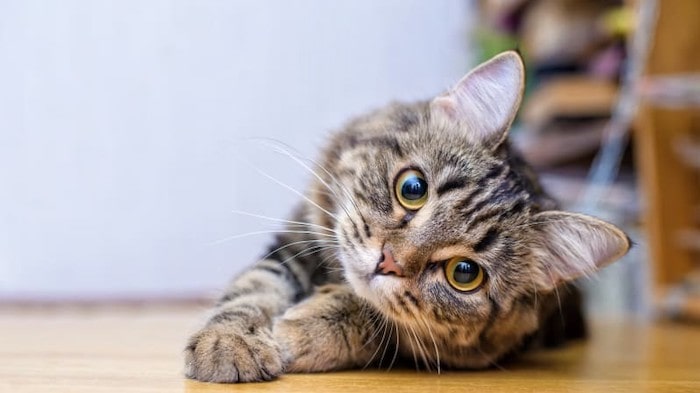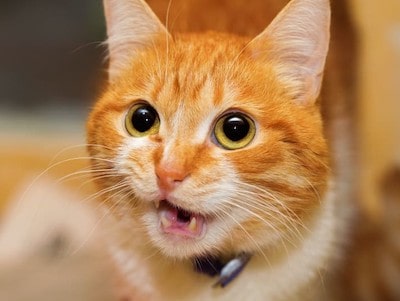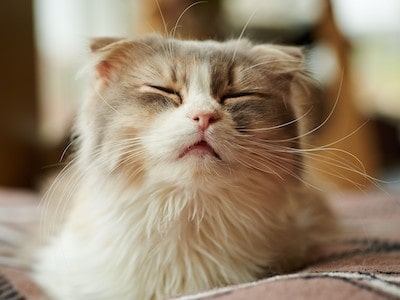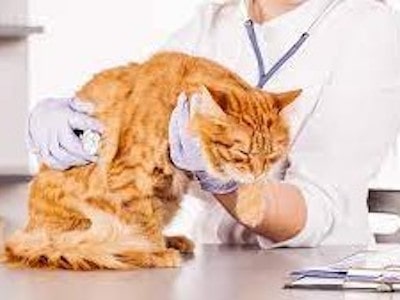As cat owners, we cherish our feline friends and strive to provide them with the best care possible. From ensuring they have a balanced diet to keeping up with their vaccination schedules, we take every step to safeguard their well-being.
However, one crucial aspect of cat health that often goes unnoticed is their respiration rate. Just like humans, cats have their own unique breathing patterns that can provide valuable insights into their overall health and indicate potential underlying issues.
In this article, we will delve into the world of cat respiration rate, exploring its significance, how to monitor it, and what abnormal readings might mean for your beloved pet. By understanding this vital sign, you’ll be better equipped to spot signs of distress or illness and seek timely veterinary care.
So, let’s embark on this informative journey and unlock the secrets behind your cat’s breathing.
What is Respiration Rate and How to Measure It in Cats?
Respiration rate is one of the vital signs that indicate how well your cat’s body is functioning. It measures how quickly your cat inhales and exhales air through their lungs. Respiration rate can be affected by various factors, such as activity level, temperature, stress, and health conditions.
The normal respiration rate for a healthy cat is between 15 and 30 breaths per minute when they are resting, calm, or asleep. This means that your cat’s chest should rise and fall 15 to 30 times in one minute. However, this range can vary depending on your cat’s age, breed, size, and individual characteristics. Some cats may naturally breathe faster or slower than others.

To measure your cat’s respiration rate, you need to observe them when they are relaxed or sleeping, but not purring. Purring can affect the accuracy of the measurement. You can use a timer or a watch to count how many times your cat’s chest rises and falls in 30 seconds. Then multiply that number by two to get the number of breaths per minute.
For example, if you count 12 chest movements in 30 seconds, your cat’s respiration rate is 24 breaths per minute (12 x 2 = 24). This is within the normal range for a resting cat.
It is a good idea to measure your cat’s respiration rate regularly and keep a record of it. This way, you can notice any changes or trends over time. You can also compare your cat’s respiration rate with other vital signs, such as heart rate, temperature, and gum color.
What Causes Rapid Breathing in Cats (Tachypnea)
Tachypnea is the medical term for abnormally rapid, shallow breathing. In cats, this means more than 40 breaths per minute. If your cat is sleeping or resting and experiencing tachypnea, this is a cause for concern. They should not be breathing rapidly when they are not exerting themselves.
There are many possible causes of tachypnea in cats, ranging from mild to serious. Some of the common causes are:
- Anemia: A condition where the red blood cells are low in number or function, resulting in reduced oxygen delivery to the tissues.
- Asthma: A chronic inflammatory disease of the airways that causes narrowing and spasms, making it hard to breathe.
- Exertion: Physical activity such as running, playing, or hunting can cause an increase in oxygen demand and respiration rate.
- Extreme heat: High temperatures can cause dehydration, heat stroke, or hyperthermia, which can affect the respiratory system.

- Fluid around the lungs: Also known as pleural effusion, this is a condition where excess fluid accumulates in the space between the lungs and the chest wall, compressing the lungs and making it difficult to breathe.
- Heart disease: A condition where the heart muscle or valves are damaged or weakened, affecting the blood flow and oxygen delivery to the body.
- Heartworm: A parasitic infection where worms live in the heart and blood vessels of the lungs, causing inflammation and damage.
- Respiratory infection: A bacterial, viral, or fungal infection that affects the nose, throat, or lungs, causing inflammation, mucus, or pus that can obstruct the airways.
Some of the signs and symptoms of tachypnea in cats are:
- Breathing with mouth open and neck stretched out
- The belly and chest moving for each breath
- Noisy or labored breathing
- Fatigue
- Gagging
- Panting
- Blue or pale gums
- Coughing
What Causes Slow Breathing in Cats (Bradypnea)
Bradypnea is the medical term for abnormally slow breathing. In cats, this means less than 15 breaths per minute. If your cat’s breathing seems slow and struggling to take in breaths, this is a medical emergency. This symptom could be caused by toxin ingestion, organ failure, a neurological problem, or impending death.

Some of the possible causes of bradypnea in cats are:
- Toxin ingestion: Certain substances such as antifreeze, rat poison, chocolate, lilies, or medications can be toxic to cats and affect their nervous system or organs.
- Organ failure: A condition where one or more organs such as the kidneys, liver, or heart stop functioning properly and cause a buildup of toxins or fluid in the body.
- Neurological problem: A condition where the brain or spinal cord is damaged or diseased and affects the signals that control the breathing.
- Impending death: A condition where the body is shutting down and preparing for death.
Some of the signs and symptoms of bradypnea in cats are:
- Breathing with difficulty and struggle
- Lethargy
- Weakness
- Confusion
- Loss of consciousness
Signs of Respiratory Distress in Cats
Respiratory distress is when your cat has difficulty breathing or does not get enough oxygen. This can be a life-threatening situation that requires urgent veterinary care. Some of the signs of respiratory distress in cats are:
- Breathing with mouth open and neck stretched out: This indicates that your cat is trying to get more air into their lungs by opening their mouth and extending their neck.
- The belly and chest moving for each breath: This indicates that your cat is using their abdominal muscles and diaphragm to help them breathe. Normally, only the chest should move for each breath.
- Noisy or labored breathing: This indicates that your cat has an obstruction or inflammation in their airways that makes it hard for them to breathe. You may hear wheezes, crackles, snorts, or grunts.
- Fatigue: This indicates that your cat is not getting enough oxygen to their muscles and organs and becomes tired easily.

- Gagging: This indicates that your cat has something stuck in their throat or mouth that interferes with their breathing. You may see them trying to cough or vomit.
- Panting: This indicates that your cat is trying to cool down their body or cope with stress by breathing rapidly and shallowly. Panting is not normal for cats and can be a sign of overheating, pain, or anxiety.
- Blue or pale gums: This indicates that your cat has poor blood circulation and oxygen delivery to their tissues. The gums should be pink and moist.
- Coughing: This indicates that your cat has irritation or inflammation in their lungs or airways that causes them to expel mucus or foreign material. Coughing can be a sign of infection, asthma, heartworm, or heart disease.
How to Prevent and Treat Respiratory Problems in Cats?
The best way to prevent and treat respiratory problems in cats is to keep your cat healthy and happy. Here are some tips on how to do that:

- Provide fresh water: Water helps keep your cat hydrated and flushes out toxins from their body. Make sure your cat has access to clean water at all times and change it regularly.
- Avoid smoke: Smoke from cigarettes, candles, fireplaces, or incense can irritate your cat’s respiratory tract and cause inflammation and mucus production. Avoid smoking around your cat or exposing them to smoke from other sources.
- Manage stress: Stress can weaken your cat’s immune system and make them more susceptible to infections and diseases. Provide your cat with a safe and comfortable environment, toys, scratching posts, hiding places, and attention. Avoid sudden changes in their routine or surroundings that can cause them anxiety.
- Follow your vet’s advice: If your cat has a respiratory condition, such as asthma, heart disease, or heartworm, follow your vet’s instructions on how to manage it. Give your cat the prescribed medication, monitor their symptoms, and take them for regular check-ups.
- Vaccinate your cat: Vaccination can protect your cat from some common respiratory infections, such as feline herpesvirus, feline calicivirus, and feline panleukopenia. Talk to your vet about the best vaccination schedule for your cat.
- Spay or neuter your cat: Spaying or neutering your cat can reduce their risk of developing some types of cancer that can affect the lungs, such as mammary cancer in females and lung cancer in males. It can also prevent unwanted pregnancies and reduce roaming behavior that can expose your cat to dangers.
FAQs
When should I be concerned about my cat’s respiration rate?
If you notice a significant and persistent increase or decrease in your cat’s respiration rate, or if they display additional symptoms such as coughing, wheezing, labored breathing, or lethargy, it is recommended to consult a veterinarian as it may indicate an underlying health problem.
Can a cat’s respiration rate vary throughout the day?
Yes, a cat’s respiration rate can vary based on their activity level, environmental conditions, and emotional state. It is important to consider these factors when monitoring their breathing patterns.
Are there any breathing patterns that are considered abnormal in cats?
Yes, abnormal breathing patterns in cats can include rapid, shallow breathing; open-mouth breathing; wheezing or coughing; and prolonged or labored breathing. These patterns may indicate respiratory distress or underlying health issues.
How can I help my cat maintain a healthy respiration rate?
Providing a stress-free environment, ensuring proper ventilation, regular exercise, maintaining a healthy weight, and keeping up with routine veterinary check-ups can contribute to maintaining a healthy respiration rate in cats.
Well, It’s a Wrap
Monitoring your cat’s respiration rate is one of the best ways to keep track of their health and well-being. The normal range of respiration rate for cats at rest is 15 to 30 breaths per minute.
However, this can vary depending on several factors. If you notice that your cat is breathing too fast or too slow, it could indicate a serious problem that needs veterinary attention.
To measure your cat’s breathing rate accurately, you should count their breaths when they are calm or asleep and not purring.
You should also measure their breathing rate regularly and keep a record of it. If you have any concerns about your cat’s respiration rate or notice any signs of respiratory distress, contact your vet immediately.
